Wheels Across Tibet – a Screenplay by Peter Morgan and GJ Maher
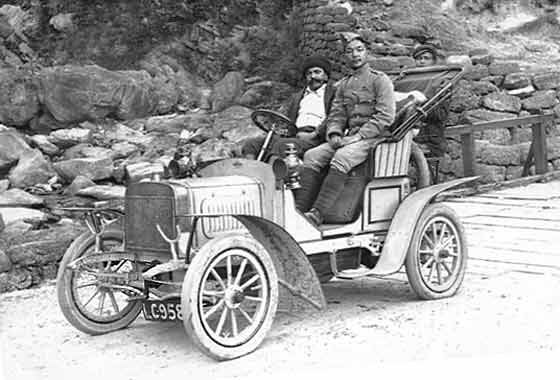
From warfare to promises, Wheels Across Tibet tracks the inevitable rolling of modernisation into Tibet.
For centuries Tibet was an isolated country protected by mountainous borders. Its wheels consisted of prayer wheels, spinning prayers out into the universe, and Buddhism’s 7th century Wheel of Dharma – the wheel that heals.
But as the world entered the 20th century Britain forcibly ‘coerced’ Tibet to embrace change, altering the nation’s spiritual direction and incorporating Western ideas into their own complex reality, aided and abetted by the relentless march of mechanisation.
Glimpsing a world of new horizons, of mountain passes permanently cloaked in snow, of surreptitious bargaining and clandestine deals, the film sees Irish-born Lieutenant Frederick O’Connor stationed in Britannia’s sweltering India, his eyes longingly turned to the nearby mysterious Land of Snows, Tibet.
Initially from a dreary outpost in Ireland, his talent for languages and insatiable sense of adventure beckon him forward to an outpost in India’s north. Increasingly fascinated with the Tibetan culture and tired of tiffins and high teas, he becomes the closest thing to a Tibetan translator the British government has got, acquiring a working knowledge of Tibet’s complex language – a script created for the express purpose of conveying Buddha’s words of peace, and a rudimentary understanding of its culture.
Drafting a mock exploration route into the Land of Snows, O’Connor grows to respect the pacifist qualities which rule Tibet’s social and political structures, and longs to learn more, first hand. By now he is stationed in Darjeeling as part of a trade mission near Tibet and India’s troubled border. Under the guise of keeping the Great Brown Bear of Tsarist Russia from claiming Tibet’s strategic peaks above the bread basket of India, he is sent as a government envoy on a British military mission into Tibet.
This strategic move by the British is part of what was known at the time as The Great Game, played between Russia, China and Britain. Lord Curzon, Viceroy of India, assumes Russia is building support in Lhasa with The Dalai Lama through the Tsar’s love of the Buddha Dharma. Rumours support this.
In reality, the Dalai Lama leads a theocratic state that resists the wheels of change and modernity altogether. The use of the spoked wheel in Tibet was even forbidden, and thus the country avoided contact with the outside world.
But Curzon understands none of this, and delegates Lt. Colonel Younghusband, a decorated army officer in the Royal Armed Forces, to enter Tibet as part of a ‘trade mission’ and find proof of Russia and Tibet’s collusion. Younghusband, a dedicated Christian, puts together a force of elite troops including the legendary Gurkhas of Nepal and 8000 yaks (donated by the King of Nepal) to carry every piece of modern warfare known to man at the time. This includes the Maxim Gun, a destructive piece of warfare transported on wheels – the Wheels that Hurt.
On December 5, 1904, a force of thousands led by the stoic and righteous Younghusband and a culturally sensitive O’Connor leaves Darjeeling for Tibet’s capital, Lhasa. They cross the border into Tibet at Jelep La, a pass reaching 4267m high, normally suited only to salt traders and pilgrims. Accounts of this achievement tell of a stamina which turns the men of the mission into heroes for the un-informed.
But there they stop, needing a reason for the troops to proceed further into Tibet. It takes 63 days before news reaches them, finally giving them the green light: The Tibetans have forced some Nepalese yak herders back across the border. It is enough to change history, leading to what became known as The Massacre at Guru. Seven hundred Tibetan soldiers are killed while only a handful of British soldiers are slain, all because of an accidental discharge of a weapon by a Tibetan General during negotiations.
Younghusband continues through to Lhasa prepared to quash any sign of resistance. More battles ensue, with the British army cutting through a population which for more than a thousand years had fostered pacifism. As a result, there are minimal British casualties but many Tibetan.
O’Connor, a government rather than military man, takes advantage of a pause in the conflict to step away from the British camp with an English journalist, Percival Langdon, sent by the London Times to report on the ‘glory of the empire’ and assigned to O’Connor’s tent. The two new friends engage a local guide, Norbu, to show them some of Tibet, including a monastery where a yogi has walled himself into blackness, and a carpet factory cooperative where they meet Kelsang, a formidable woman who captures O’Connor’s attention. The English pair’s fascination with Tibetan culture gains momentum, with Langdon intrigued by the artisan craftsmanship and commercial opportunities they present, while O’Connor’s cultural focus is on the Dharma Wheel and its influence in Tibetan society.
The British troops reach Lhasa, with no evidence of any Russian presence militarily or politically. Younghusband is in the awkward position of negotiating and signing a treaty with the Regent (HH Dalai Lama has fled) with only six weeks before winter is to render Jelep Pass impassable for the withdrawing British troops. O’Connor is given the difficult task of translating both written and spoken dialogue. With the telegraph 250 miles away at Gyantse, Younghusband negotiates on his feet, resulting in a treaty in which Tibet allows a Trade Mart to be established at Gyantse, and incurs a substantial monetary debt to England.
While the mission is withdrawing, Younghusband has what he refers to as a ‘Mystical Experience’, with “visions of a far greater religious faith yet to be.” (He later becomes known as England’s first hippie).
“… hence forth life for me was naught but buoyancy and light.”
As the departing wheels carrying the Maxim guns are replaced by Tibet’s prayer wheels and the Wheel of Dharma doctrine once more, O’Connor, along with a medical officer and 75 soldiers, remain in Gyantse to foster commerce between the British Lion and the Snow Lion of Tibet. For the next two years they maintain the presence of the Empire and Monarchy while learning about Tibetan ways. O’Connor, who does nothing by halves, befriends the Penchen Lama, a Tibetan ranked metaphysically higher than the Dalai Lama. Their mutually beneficial friendship opens the Lama to the benefits of modernisation, and O’Connor to the Dharma.
On leave back in England, O’Connor successfully submits his collection of Tibetan folk tales – until then only spoken – to publishers in England for publication. While there he also purchases two Peugeot motor vehicles on behalf of the British Government, shipping and conveying them back to Tibet to present one to the Penchan Lama as a gift. Landing in India off the ship, they are to be the first cars in Tibet. They are carried, after dismantling, by a team of yaks and men over the Jelep Pass to the 100 miles of road O’Connor had prepared prior to leaving.
For Tibet, the wheels of modernisation have begun to turn.
Jump forward to the next century, where in 2021 a solar powered car is being marketed by a British manufacturer in Lhasa by O’Connor’s great grandson, who has driven the vehicle from Beijing. He greets Tibetan folk along the way and is interviewed by Chinese journalists.
A slowly unfolding fern leaf stretches towards the sun, giving life to all.
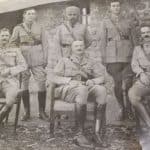
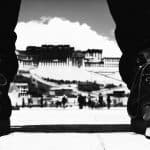
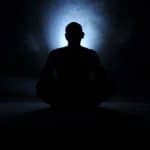

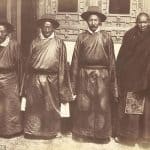
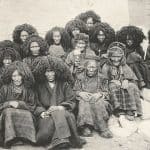
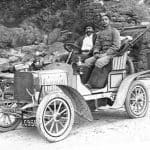
One Response
What an amazing story, especially when it is being read in Shenzhen (China) where today one of the world’s largest manufacturers of electric vehicles is located…